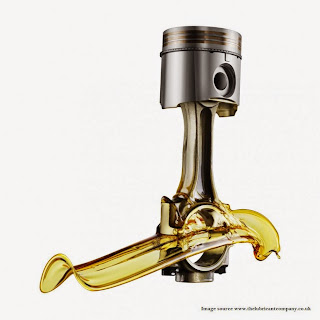Medical Device Contract Manufacturing Market | Industry Report 2019 - 2024
According to research report the Medical Device Contract Manufacturing Market is expected to reach USD 91.3 billion by 2024 from an estimated USD 55.0 billion in 2019, at a CAGR of 10.6%. Newer and advanced technologies necessitate the incorporation of advanced manufacturing methods, which result in increased overall costs. While major players with sufficient resources can update their manufacturing processes to accommodate such changes, small and medium-sized manufacturers must look for contract manufacturers to save costs. Dynamic small and medium start-up companies are also turning to third-party contract manufacturers to reduce their start-up and internal costs and expedite the time-to-market of their products. This focus on manufacturing agility and flexibility to reduce costs and accelerate the time-to-market, as well as the need to maintain constant innovation, is driving the demand for contract manufacturing services.
Read More: https://www.marketsandmarkets.com/PressReleases/medical-device-contract-manufacturing.asp
The medical device contract manufacturing market is segmented on the basis of device type, service, class of device, and region.
• On the basis of device type, cardiovascular devices and endoscopy devices are both projected to witness the highest growth during the forecast period between 2019 and 2024. The increasing prevalence of cardiovascular diseases is expected to increase the demand for cardiovascular devices in hospitals, diagnostic laboratories, and home care settings. The volume growth of cardiovascular devices, coupled with an increasing number of medical device companies opting for contract manufacturing services in order to reduce the cost of manufacturing, is expected to drive the market for cardiovascular devices during the forecast period.
• By service, the final goods assembly services segment is expected to witness the highest growth during the forecast period. Market growth is largely driven by the increasing need for these services by various OEMs, medical device companies, and pharmaceutical companies that are involved in the manufacturing and sales of fully integrated single-use medical devices.
• Based on the class of device, the market is broadly segmented into Class I, Class II, and Class III medical devices. The Class III medical devices segment is expected to register the highest growth during the forecast period due to the rising demand for pacemakers, implants, and ventilators. In addition to this, the manufacturing of Class III devices requires sophisticated and advanced technologies that can be a budgetary concern for small and medium-sized medical device companies.
• OEMs are increasingly opting to outsource their technical and production services to contract manufacturing organizations (CMOs) to reduce their manufacturing footprint. Outsourcing the production of various components in a medical device allows manufacturers to be more dynamic and cost-effective in their production process. The consolidation of OEMs has encouraged CMOs to follow the trend and also consolidate to expand their capabilities and form strategic partnerships with their OEM customers.
Download PDF Brochure: https://www.marketsandmarkets.com/pdfdownloadNew.asp?id=170622851
Geographically, the Asia Pacific is expected to witness the highest CAGR during the forecast period, owing to factors such as the increasing demand for medical devices in this region due to the improving healthcare infrastructure, adoption of technologically advanced products, low cost of manufacturing, and the less stringent regulatory scenario for manufacturing of medical devices which promotes higher usage of medical devices as compared to most developed countries.
Read More: https://www.marketsandmarkets.com/PressReleases/medical-device-contract-manufacturing.asp
The medical device contract manufacturing market is segmented on the basis of device type, service, class of device, and region.
• On the basis of device type, cardiovascular devices and endoscopy devices are both projected to witness the highest growth during the forecast period between 2019 and 2024. The increasing prevalence of cardiovascular diseases is expected to increase the demand for cardiovascular devices in hospitals, diagnostic laboratories, and home care settings. The volume growth of cardiovascular devices, coupled with an increasing number of medical device companies opting for contract manufacturing services in order to reduce the cost of manufacturing, is expected to drive the market for cardiovascular devices during the forecast period.
• By service, the final goods assembly services segment is expected to witness the highest growth during the forecast period. Market growth is largely driven by the increasing need for these services by various OEMs, medical device companies, and pharmaceutical companies that are involved in the manufacturing and sales of fully integrated single-use medical devices.
• Based on the class of device, the market is broadly segmented into Class I, Class II, and Class III medical devices. The Class III medical devices segment is expected to register the highest growth during the forecast period due to the rising demand for pacemakers, implants, and ventilators. In addition to this, the manufacturing of Class III devices requires sophisticated and advanced technologies that can be a budgetary concern for small and medium-sized medical device companies.
• OEMs are increasingly opting to outsource their technical and production services to contract manufacturing organizations (CMOs) to reduce their manufacturing footprint. Outsourcing the production of various components in a medical device allows manufacturers to be more dynamic and cost-effective in their production process. The consolidation of OEMs has encouraged CMOs to follow the trend and also consolidate to expand their capabilities and form strategic partnerships with their OEM customers.
Download PDF Brochure: https://www.marketsandmarkets.com/pdfdownloadNew.asp?id=170622851
Geographically, the Asia Pacific is expected to witness the highest CAGR during the forecast period, owing to factors such as the increasing demand for medical devices in this region due to the improving healthcare infrastructure, adoption of technologically advanced products, low cost of manufacturing, and the less stringent regulatory scenario for manufacturing of medical devices which promotes higher usage of medical devices as compared to most developed countries.

Comments
Post a Comment